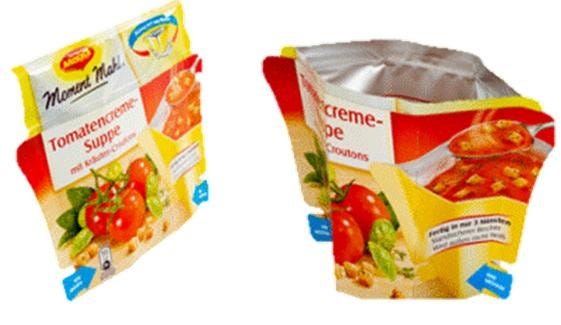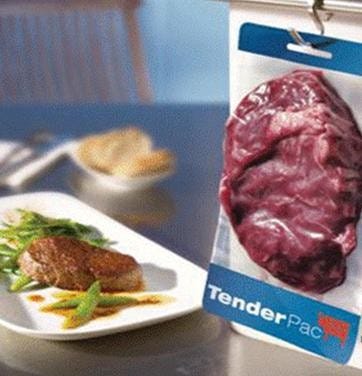Aging population wants easy-to-use packaging
Market research firm Canadean recently took a closer look at how the demands of Germany's aging population will impact plastic packaging design. By 2055, more than half of the German population will be of age 65 or older. According to Canadean, this aging population will demand easy-to-use, easy-to-handle packaging, with clearer and bolder labeling.
January 22, 2014
Market research firm Canadean recently took a closer look at how the demands of Germany's aging population will impact plastic packaging design. By 2055, more than half of the German population will be of age 65 or older. According to Canadean, this aging population will demand easy-to-use, easy-to-handle packaging, with clearer and bolder labeling.
|
Nestle has unveiled a cup packaging for instant soups. |
In addition, an older population will see an increase in the number of smaller households and manufacturers will need to focus on smaller packaging in order to reduce waste and conserve space. With this in mind, Nestlé has introduced a space-saving cup-shaped flexible pouch for its instant soups, which offers convenience for on-the-go consumption, as well as a storage solution.
Material preferences
Canadean believes that rigid plastics will continue to strengthen its stronghold over the German packaging industry over the next five years, as glass loses share.
Cost concerns will hinder the ability of packaging manufacturers to meet all of these requirements. For example, the rising costs of raw materials meant sales of plastic film across both consumer and non-consumer markets as sales fell by 0.4 percent in 2012.
Despite this, plastics are still the most popular packaging material in Germany, with rigid plastics holding the highest
|
Sealpac GmbH's new innovative TenderPac for red meat has a dual compartment packaging system optimum for maturing meat products. The first compartment holds the product, while the second compartment neatly collects drip loss during maturation process with the use of absorption pad. This ensures that meat can be stored dry, leading to an increase in shelf life. |
share of the sector in 2012.
An example of packaging innovation the report highlighted included Sealpac GmbH's introduction of the Tenderpac, a flexible plastic system ideal for storing red meats in ambient conditions. In addition, the light weight lowers transportation and storage costs, benefitting both manufacturer and consumer.
Overall growth will be moderately strong over the next five years
The German Packaging industry will grow at an annual rate of 1.05 percent (by volume in million units) up to 2017. The need for lightweight, protective packaging in the food and personal care sectors will push rigid plastics to display the highest value growth of the sector over the next five years, at an annual rate of 1.88 percent.
Generally heavier and more fragile glass will decline at an annual rate of -0.36 percent for the same period.
Another market report took a look at the implications of an aging society on packaging design. From 2010 to 2050, in developed regions, those aged 65 and over will swell from 16 percent to 26 percent of the population, while those aged 80 or more will rise from 4 percent to 9 percent, according to figures from Datamonitor. In absolute numbers, that means that the population aged 65-plus will grow from 197 million to 337 million, while the population aged 80-plus will grow from 53 million to 122 million.

While the opportunities and demand for senior-friendly packaging are clear, manufacturers must remember that such features cannot be the only selling point, the report stated.
Products must be designed with seniors in mind, but they should not carry such an explicit message; no-one wants to think of themselves as elderly.

 While all manufacturers should be incorporating universal design principles into their packaging design briefs, this is especially critical for the priority product categories, such as prescription and OTC medications, functional foods, and heavy or spill-prone household products.
About the Author(s)
You May Also Like




